Key Takeaways:
- Hearing aids come with either rechargeable or disposable batteries.
- While most consumers prefer rechargeable, some choose disposable due to familiarity or other reasons.
- Disposable batteries come in four sizes: size 10 (the smallest), size 312, size 13, and size 675 (the largest).
- Habits are key when it comes to battery life. If you use disposable, mark your calendar as a reminder when to change batteries. For rechargeable, charge them each night.
.png)
As an audiologist, I have witnessed firsthand the impact that hearing aids can have on someone's life.
These small devices can bring back the ability to hear and connect with others in ways that cannot be described. However, hearing aids require power to function; this is where hearing aid battery life becomes crucial.
In this article, we will look at the types of disposable batteries available, the battery life of rechargeable batteries, and tips and tricks for extending the battery life.
Disposable Versus Rechargeable Batteries
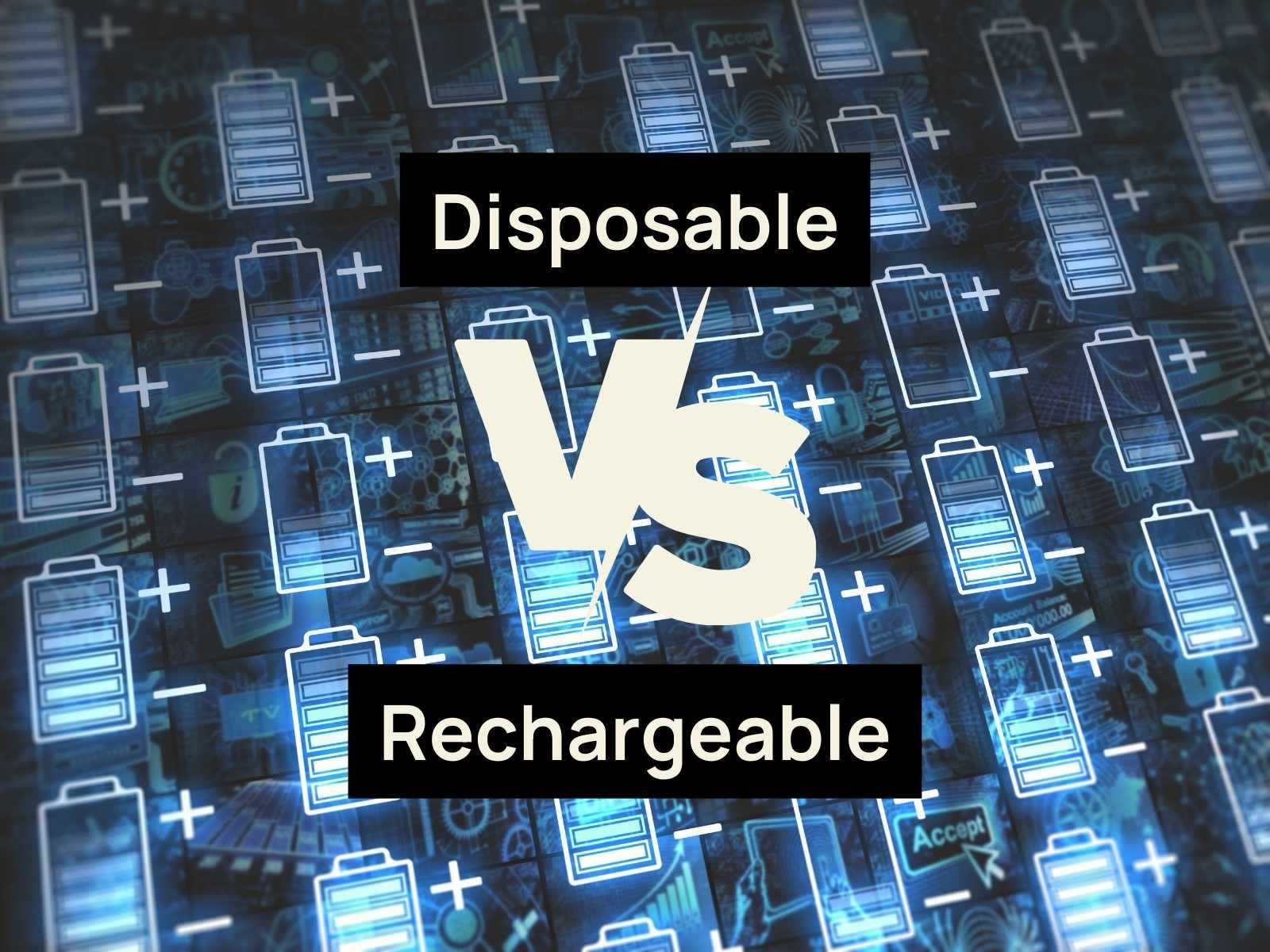
One of the most significant factors when choosing hearing aid batteries is whether to opt for disposable or rechargeable batteries. Both have their advantages, and it mainly comes down to personal preference.
Disposable batteries are widely available, easier to replace, and are the go-to option for most hearing aid users. However, they come with a cost for each disposable battery you need to replace.
Rechargeable batteries, on the other hand, are quickly becoming the most popular choice among hearing aid users today. Rechargeable batteries have a longer lifespan and reduce waste, making them eco-friendly. They also do not require frequent battery replacement as they can be charged overnight, so you won't risk the battery dying during that critical business meeting. Keep in mind, if the user forgets to charge them, they can be left without power, which can be incredibly frustrating.
Types of Disposable Batteries
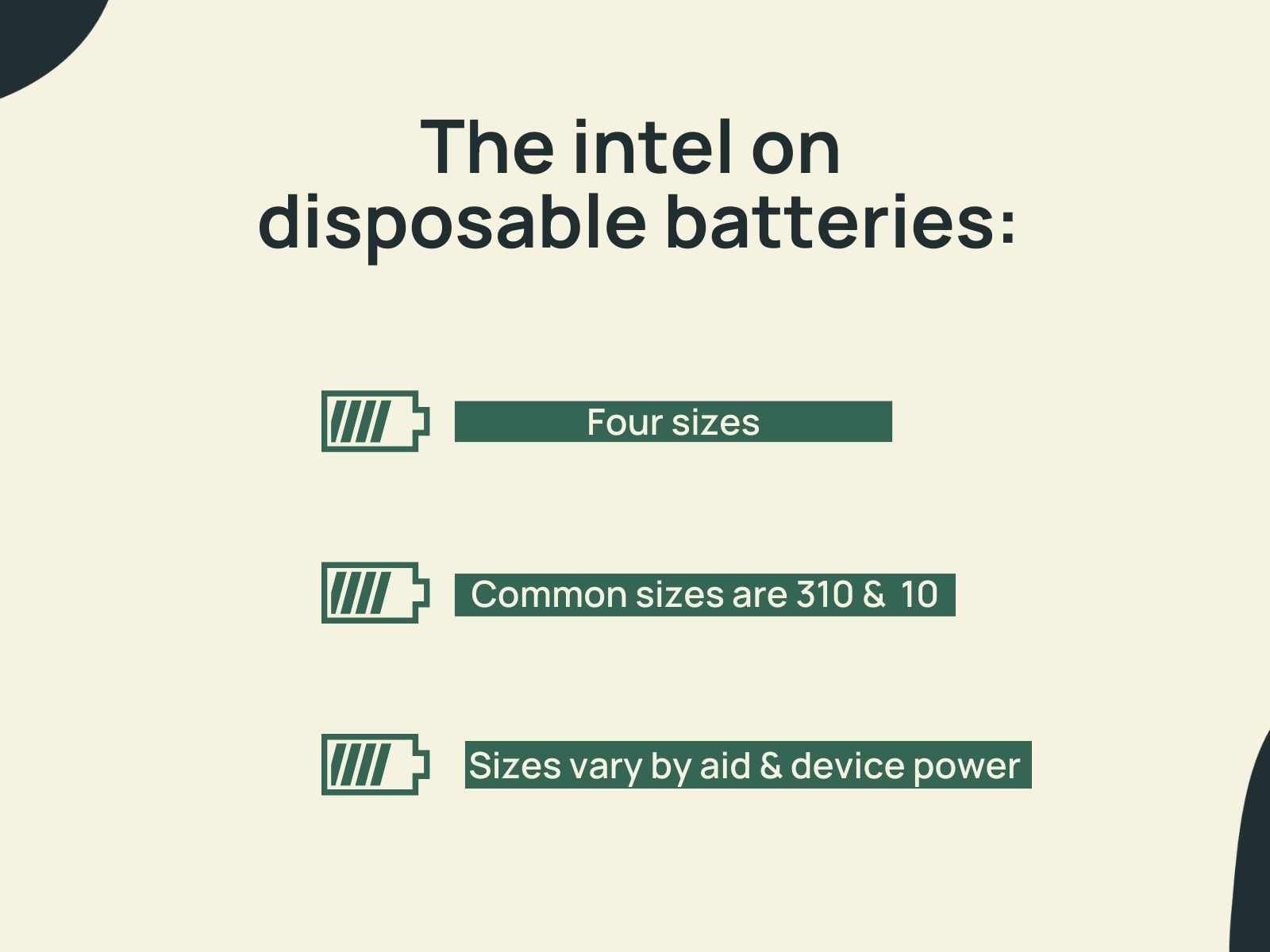
A while back, I had a patient for cochlear implant programming who wore a RIC hearing aid on the other ear. We focused on fine-tuning her CI, but something wasn't right when it came time to balance the volume with both devices.
So I did a quick listening check of her hearing aid, only to discover that the disposable battery in the hearing aid was dead. Luckily, that was an easy fix!
Have you ever been in a situation where your hearing aid stops working? It's like hitting the mute button on your world. To avoid that dreaded silence, let's talk about battery size and battery life.
The 411 on disposable batteries:
- Available in four sizes
- The most common sizes are 312 and 10
- Battery sizes can vary across hearing aids (due to power requirements)
- Different battery sizes are required for hearing aids because of the size of the device and power requirements.
Now, let's go through the different battery options, from smallest to largest.
.jpg)
Size 10
The smallest of the bunch, these yellow-tab batteries are used for discreet custom hearing aid styles: IIC and CIC. This battery typically lasts three to seven days depending on amplification level needed and features in use.
Size 312
Brown-tab batteries that keep most receiver-in-the-canal (RIC), mini BTE, and ITC devices running smoothly. Size 312 batteries last three to ten days depending on amplification level needed and features in use.
Size 13
Orange-tab batteries ready to power standard BTE and ITE hearing aids. They will last you six to fourteen days depending on amplification level needed and features in use.
Size 675
The big guns of hearing aid batteries, usually used for power-hungry devices like super power BTEs and disposable battery powered CIs. These last nine to twelve days depending on amplification level needed and features in use.
The typical battery life span will vary depending on your wear schedule, degree of hearing loss, number of hours streaming, and other factors.
⭐ Pro tip: Replacing your batteries regularly is helpful so you don't unexpectedly run out of juice like in the above example. Some patients like to stick the battery tab on their wall calendar to remember which dates they replaced the batteries or just set reminders in their phones to replace them.
👉 Here's a quick way to check whether your battery is dead:
- Hold the battery about one foot off of a table and drop it.
- If it bounces, the battery is dead.
- If it 'sticks' and doesn't bounce, it's still good.
Battery Life of Rechargeable Batteries
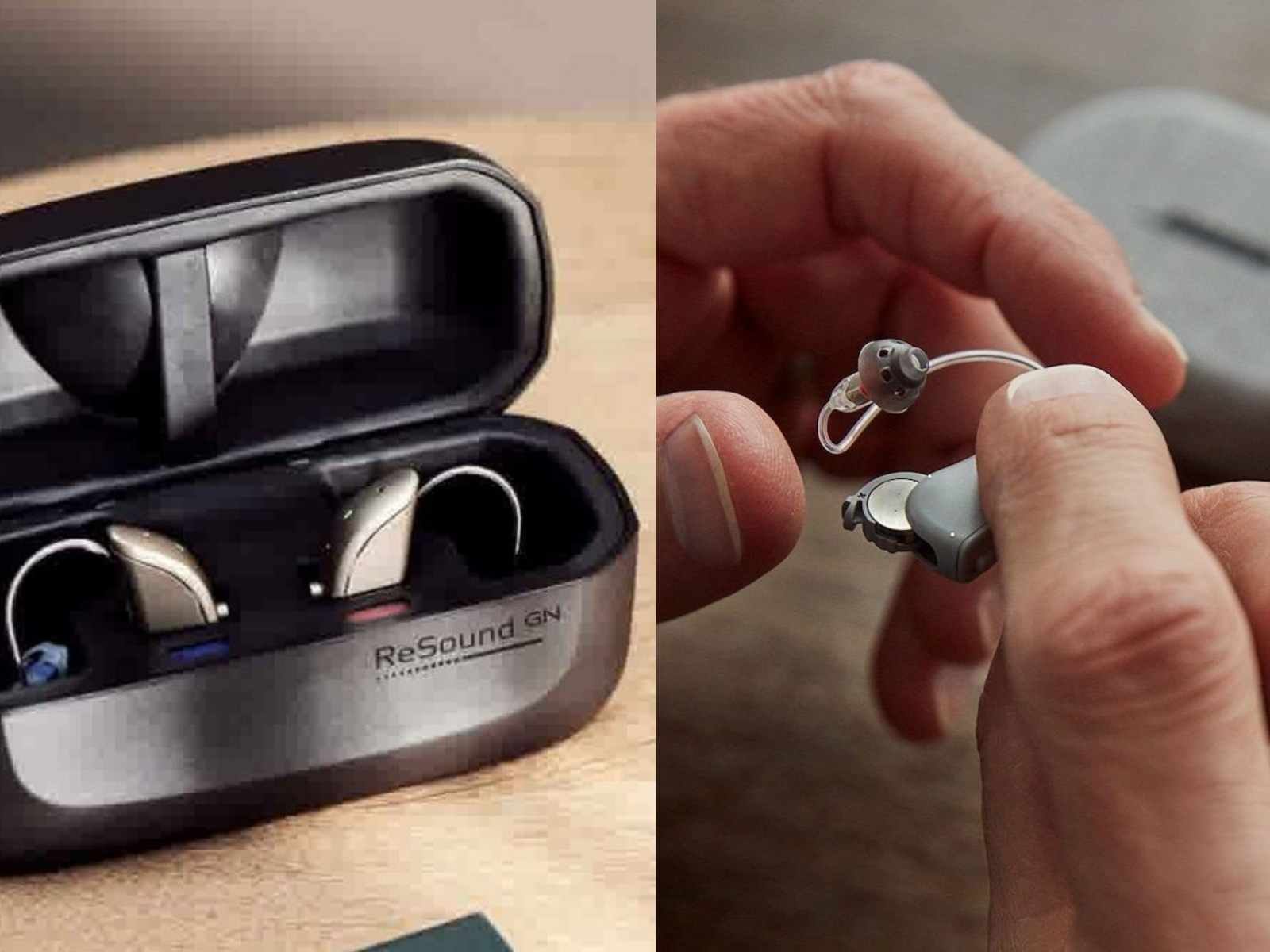
Rechargeable batteries charge each night and provide power to get you through an entire day. They may last anywhere from 20-30 hours before requiring a charge. And, they can last for four or up to six years before needing to be replaced.
However, the battery life of rechargeable batteries varies, especially for those who do a lot of streaming during the day (Bluetooth can be a battery killer). It's essential to note that the battery life can also drain faster depending on the user's listening environment, the type of hearing aid device they use, and the hearing aid settings.
⭐Pro tip: To make the most of your rechargeable battery within your warranty period, you'll want to have your hearing aid serviced at the conclusion of your warranty.
<style type="text/css">
.tg {border-collapse:collapse;border-spacing:0;}
.tg td{border-color:black;border-style:solid;border-width:1px;font-family:Arial, sans-serif;font-size:14px;
overflow:hidden;padding:10px 5px;word-break:normal;}
.tg th{border-color:black;border-style:solid;border-width:1px;font-family:Arial, sans-serif;font-size:14px;
font-weight:normal;overflow:hidden;padding:10px 5px;word-break:normal;}
.tg .tg-0pky{border-color:inherit;text-align:left;vertical-align:top}
</style>
<table class="tg">
<thead>
<tr>
<td class="tg-0pky"></td>
</tr>
</thead>
</table>
Can you overcharge your hearing aids?
Don't worry about leaving your hearing aids in the charger for too long, even after fully charging them. Hearing aids are generally in a 'sleep' mode while charging, and the charger is a safe place to keep them. As an aside, it's also a great place to store them inside the charger with the lid closed if you have any pets in the home. Cats and dogs love hearing aids!
Tips and Tricks for Best Battery Life
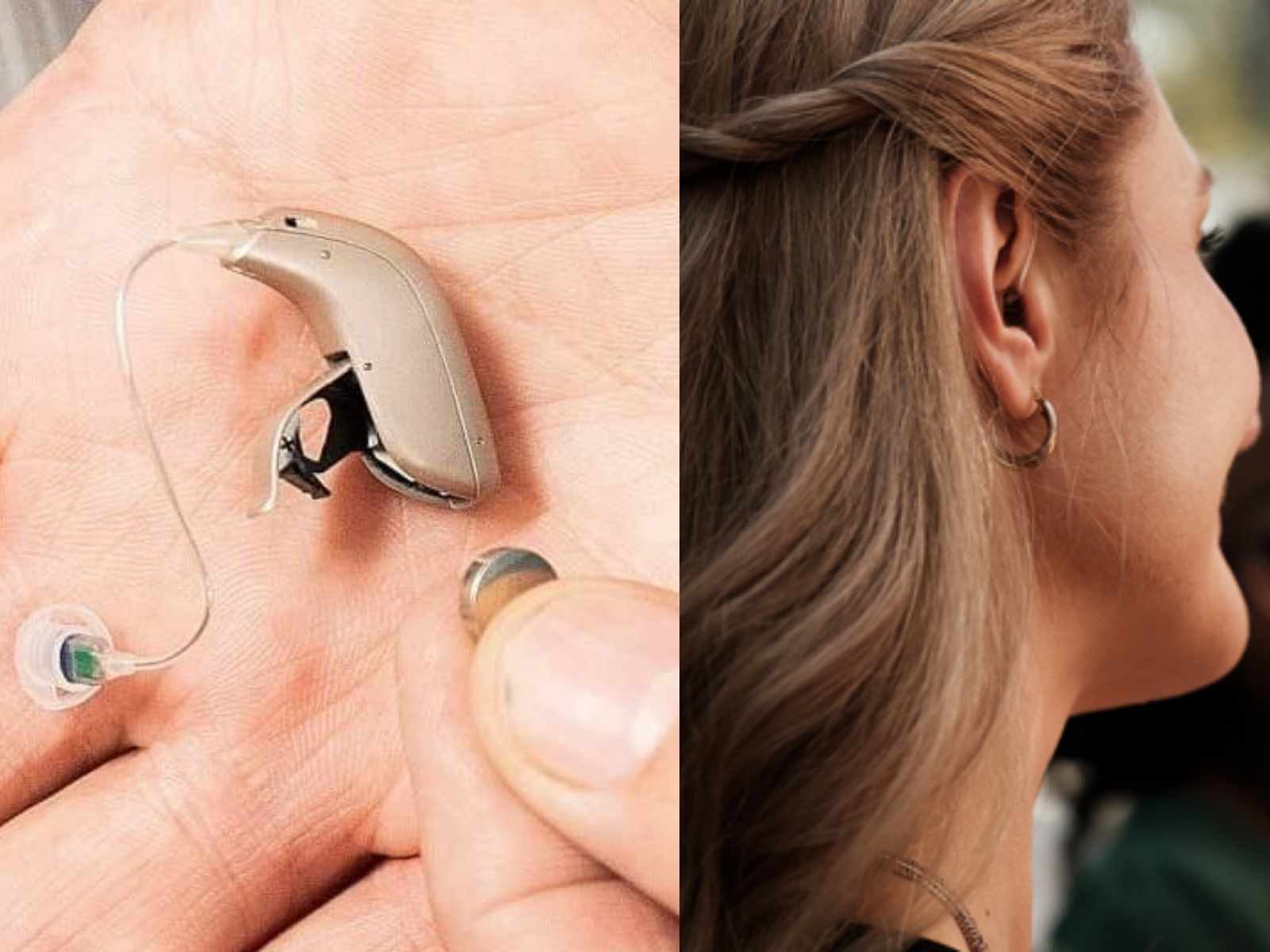
To get the best battery life out of your hearing aids, you can do a few things.
Turn Off When Not in Use
One tip is to turn off the hearing aid to preserve battery life when it is not in use. Patients often show up for their hearing evaluation with a pair of hearing aids squealing in their pockets.
Suppose you need to take them out, such as at the hairdresser or barber. In that case, you can preserve your battery life by either powering them down (for rechargeable, press and hold the button for several seconds until you see a red light) or opening the battery door (for disposable battery-powered hearing aids).
Use a Hearing Aid Dryer
Hearing aids and moisture don't mix! For any hearing aid, reducing moisture helps keep your device in tip-top shape. Especially for patients with disposable batteries who live in humid climates or perspire profusely, corrosion can build up in the battery compartment and compromise sound quality and battery life.
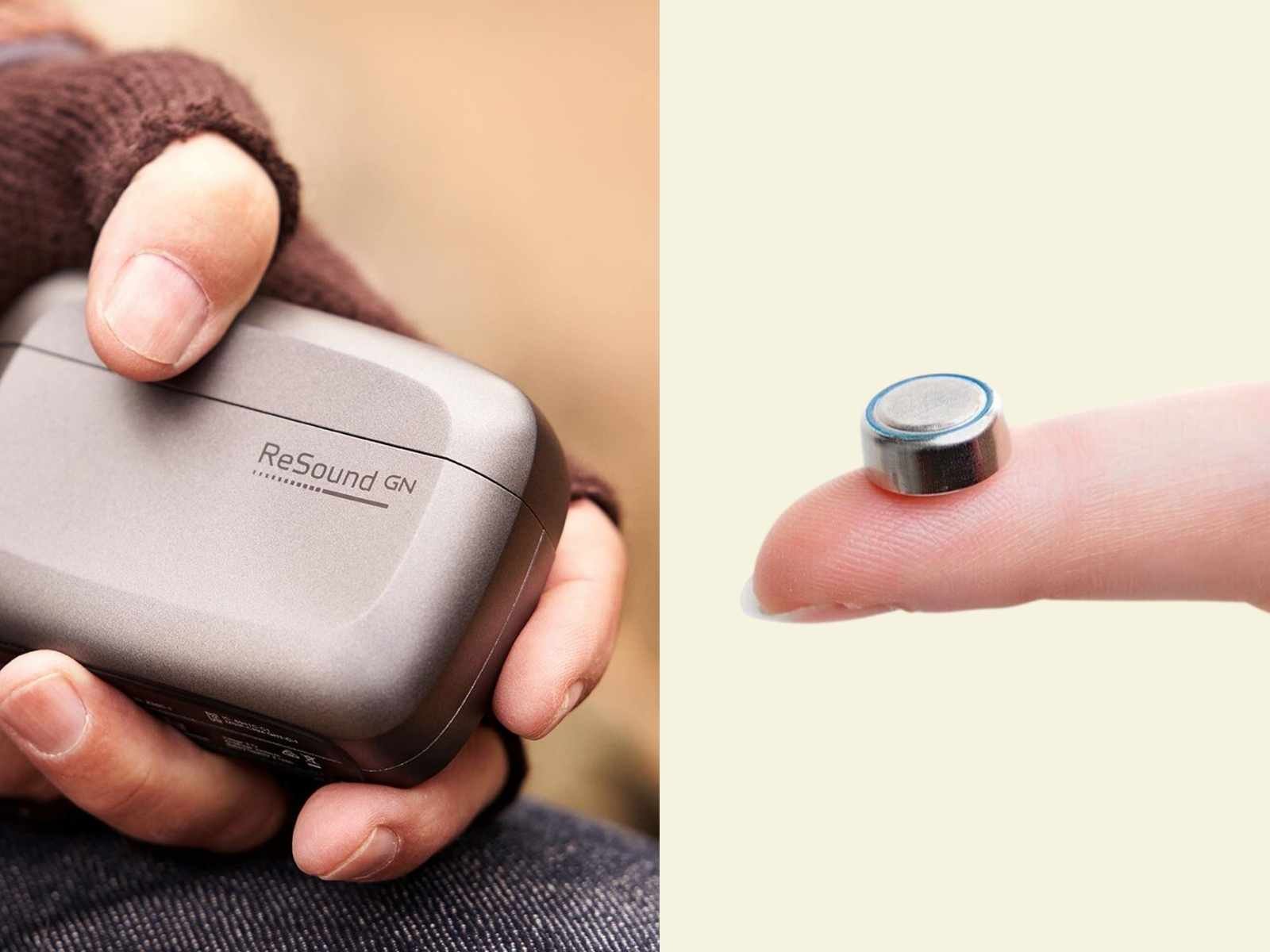
For Disposable Batteries
These tips apply mainly to those with disposable battery-powered hearing aids.
Timing Is Everything
When you take out your pack of batteries, only remove the pull tab just before you plan to replace the battery.
Then, wait five minutes to allow oxygen to activate the battery fully. Pick your favorite song to pass the time.
⭐ Fun fact: Clocks by Coldplay is exactly five minutes long.
Check the Dates
You'll want to get your batteries from a reliable source and check the expiration date. Patients sometimes find what looks like a good deal online, only to find that these batteries don't work properly.
Open the Battery Door at Night
When you're not wearing your hearing aids, you can save battery life by opening the battery door.
Store Properly
Store your batteries in a cool, dry place.
Conclusion
In conclusion, hearing aid battery life is essential when purchasing a hearing aid device. Whether you choose disposable or rechargeable batteries, understanding the different battery types, their life span, and how to extend it will help you ensure that your hearing aids stay powered and functioning well.
Simple tips and tricks, such as turning off the hearing aid when not in use and replacing batteries immediately when low, can go a long way in improving the battery life of your hearing aids. As an audiologist, I recommend educating users about the importance of hearing aid battery life and the options available. It can make all the difference in the quality of life for those with hearing loss.






